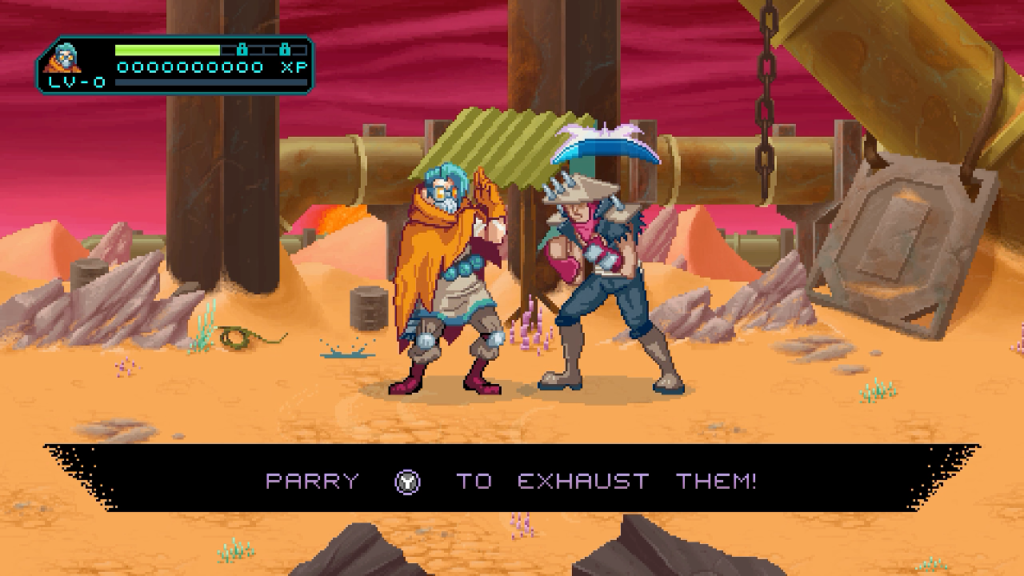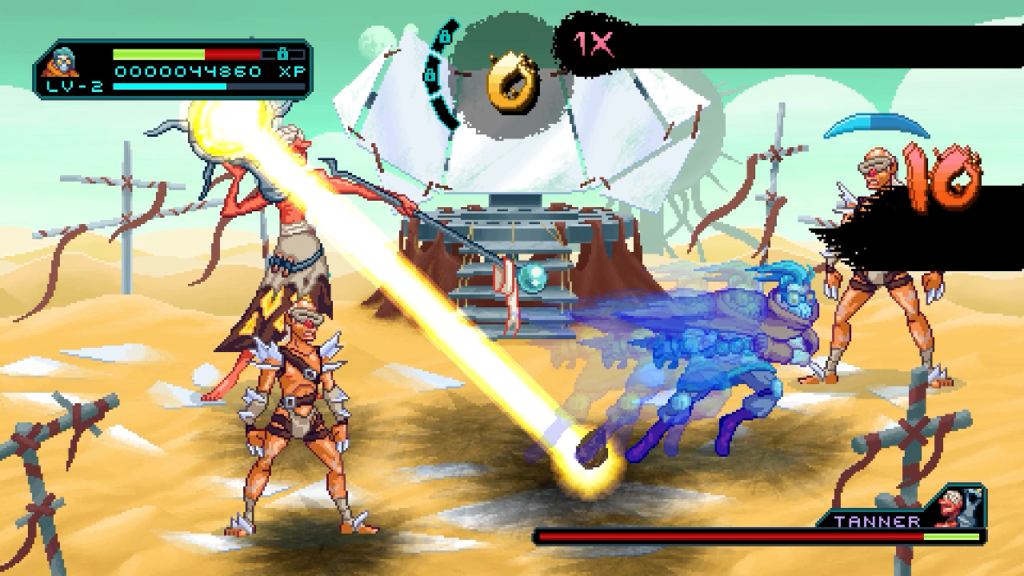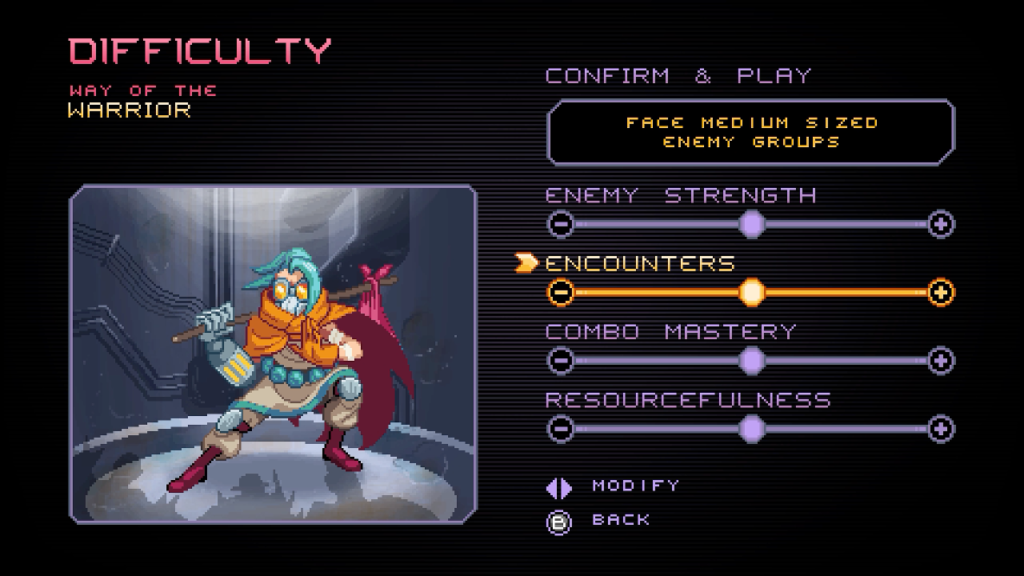Zircon V is a desert planet and an industrial graveyard. The few humans who persist here have banded together into sun-worshipping cults who scavenge the ruins, fashioning the scraps they uncover into crude weapons to make war with rival clans. Into this wasteland comes The Wanderer, a survivor of cruel human experimentation and a master of the Way of the Passive Fist, a martial discipline that emphasizes endurance and agility over raw strength. Confronted by bandits one day, The Wanderer defeats them but recognizes in their leader’s cybernetic arm a shadow of their own past. They set out into the sands to put a stop to these new experiments.

Way of the Passive Fist is a beat ‘em up with the twist that I never beat anyone up. I couldn’t if I wanted to: The Wanderer’s only abilities are to parry, dodge, and shove. Rather than hit points, enemies have stamina bars which deplete when I successfully counter their attacks. Visual cues above an enemy’s stamina bar tell me what ability to counter with; I must parry when it flashes purple and dodge when it flashes red. When the enemy’s stamina bar is depleted, I may use the shove ability to knock them out.
Way of the Passive Fist uses this combat system to put a rhythmic spin on familiar beat ‘em up tropes. Enemies take it in turns to attack The Wanderer in patterns unique to each type. By memorizing the order and timing of parries and dodges for each enemy type and looking to see which is coming to attack next, I can successfully counter each attack until I exhaust and defeat them all. The combat becomes a kind of brutal dance, The Wanderer’s partners trading back and forth until the dance card is empty.

Boss fights are where the combat’s elegance purposefully devolves into desperation. Bosses have inexhaustible stamina and relentless aggression, forcing me to use The Wanderer’s most powerful abilities to take them down. When I successfully dodge or parry an attack, I build up a combo meter which I may expel to unleash special attacks. Special attacks can potentially defeat one or more enemies with a single attack and are the only way to damage most bosses. Boss fights make the dance more complicated: I must successfully match a mook’s moves while avoiding solar beam bombardments or a mechanical scorpion’s tail to build up the combo meter and allow me to assault a boss’ health directly.
Way of the Passive Fist’s difficulty feels just about perfect. Telegraphed abilities make standard enemies easy obstacles if I’m paying attention. It’s against bosses where I run into the most difficulty, but after a few attempts resulting in devastating and horrible death I learn their patterns and within minutes what seems insurmountable becomes possible. It’s in the post-game New Dawn mode where the kid gloves come off, embracing the beat ‘em up genre’s arcade roots and challenging me to complete a remixed campaign in one sitting with no continues.

New Dawn is so difficult I am yet to beat even the first level, but there are tools to make specific systems easier or harder to my tastes. Modifiers let me control enemy strength, enemy group density, the timing window to parry and dodge attacks, and how many recovery items and checkpoints will appear. I found Way of the Passive’s main campaign on default difficulty to be satisfactorily challenging and I appreciate the arcade-roots intensity of New Dawn, but tools are available to make the experience enjoyable to all skill levels.
My first time playing Way of the Passive Fist, I felt delight as I recognized a fresh spin on the familiar beat ‘em up genre. Delight grew into admiration as it stretched its simple-but-solid design to its limit then the credits rolled when it seemed about to snap. I reached the ending without noting a single negative experience. It’s one of the best indies I’ve played in years, and since it’s often on sale for a dollar fifty US, it’s difficult not to recommend it to anyone interested in a subversive take on arcade classics.